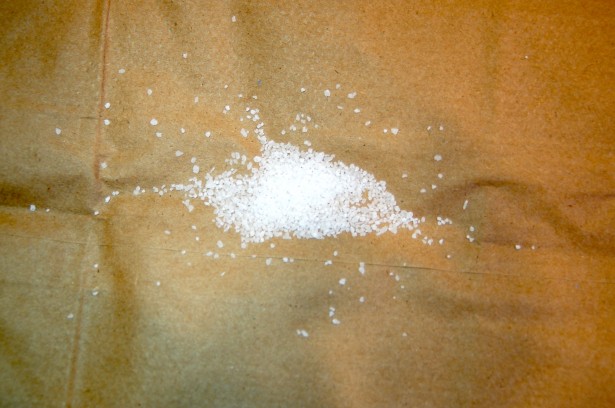The Minnesota Environmental Partnership is proud to feature the following post as part of a series of columns as part of a Student Voices Series issues. This is part of a continuing collaboration with Macalester College’s Geography Department and its students.
Salty About Pollution:
Winter Road De-Icing Tactics Railroading Minnesota Freshwater Ecosystems
Cold weather is coming, and as it comes, so does “salt season.” As most Minnesotans would be unsurprised to hear, Minnesota is part of the “Salt Belt,” a group made up of the 21 US states that use road salt to clear ice and snow from their streets. Last year, Minnesota’s Department of Transportation (MnDOT) spent a staggering $20 million on 277,000 tons of salt. In addition to the monetary costs, road salt is environmentally destructive. The challenge is that we need to minimize salt use while still keeping our roads safe.
Road salt, a substance similar to table salt, though it includes several other chemical compounds, melts ice and snow by lowering the freezing point of water. The salt clears roads, enabling citizens to drive safely. Unfortunately, that’s not all it does.
Once applied to the roads, salt breaks down and the chemicals that make it runoff into soil, harming plants, or into water. One of the chemicals, chloride, is a pollutant that damages water ecosystems and kills fish. It also puts pressure on amphibians and clears the way for salt-tolerant invasive species.
The Minnesota Pollution Control Agency warns, “It takes only one teaspoon of road salt to permanently pollute 5 gallons of water.” This is because salt contamination stops oxygen from spreading evenly throughout the water and reduces the total amount of nutrients. Forty Minnesota lakes are already categorized as “contaminated.” Though this number may not seem high, many more are in danger from salt runoff. Road salt can also pollute the ground water; 27% of wells in the Twin Cities have more chloride than the US Environmental Protection Agency approves for safe drinking water.
I’m not suggesting we just let roads stay icy. Icy roads are unsafe for drivers. According to an estimate from the American Highway Users Alliance, “road salt reduces collisions by up to 85%.” However, salt is not the only solution to icy pavement. There are more environmentally friendly alternatives that still keep roads safe.
MnDOT has a Salt Solutions Program that is working to keep roads safe for drivers while protecting Minnesota’s environment by using salt sparsely and preventatively. This is on par with actions taken by government agencies in other wintery states. However, according to a study by the University of Minnesota, MnDOT is responsible for less than half of road salt consumption across the state. The rest of salt use comes from cities, school districts, airports, colleges, private companies, and homeowners, so Minnesota can’t reduce road salt use without support from local governments and the private sector. That support can start with individual citizens moving away from salt.
For homeowners, Calcium Magnesium Acetate (CaMgAc) and Potassium Acetate (KAc) are biodegradable salt substitutes that get the job done and are safer for the environment. They do have a slightly higher price tag than salt, though. Sand, though cheaper than CaMgAc and KAc, adds traction but does not melt ice and snow as salt does, so it is not a good direct substitute. Sand also can cause environmental harm.
For those unwilling or unable to pay more for CaMgAc or KAc, there’s no reason not to at least cut back on salt use this winter: salt is both ecologically and monetarily costly, so by using less you can protect your neighborhood environment and your pocketbook at the same time. Many homeowners use more salt than is necessary. According to the National Environmental Education Foundation, individuals can minimize salt use in two simple ways, while still effectively de-icing surfaces.
First, always clear as much ice and snow as possible before using salt, and then only use salt on ice. Second, you can use around 30% less salt, while still achieving the same result, if you mix it with water before putting it on the ice. These two easy fixes can help you become more environmentally friendly and save money.
Let’s lead the way for other states by reducing salt use by individuals and making a conscious effort to protect our water from pollutants. Minnesota’s winters are well-known, but we’re also the Land of 10,000 Lakes. If we don’t make a conscious effort to protect that legacy, we’ll lose it.
Isabella Soparkar is an Environmental Studies major at Macalester College who believes that the small, positive impacts of individual actions are instrumental in solving larger environmental problems.
